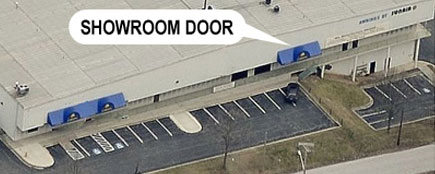There are several ways to keep a retractable awning safe from wind damage; depending on the type and quality of your awning, the weather conditions, and the accessories you have. Here are some general tips:
Know the weather forecast. If you expect strong winds or storms, it is important to retract your awning before they arrive. The awning should always be in retracted position if you are not home or on the premises. One of the main features and beauty of a retractable awning is that it easily extends and retracts. So, when you are done using the awning or entertaining under it, push the button so it retracts back and out of harm’s way. This is why it is always recommended that you buy a motor for your awning, so it is simple to extend and retract, and retracting the awning does not become a chore that does not get done once you are finished using the awning.
Make sure the awning is properly secured to your home. Installing the awning properly is part of the professional installation team’s job you hire. If you install the awning by yourself, make sure you used the proper number of brackets configured with that sized awning model. Also make sure the correct number of bolts are used to mount each bracket to the wall and that they are properly secured into the wall itself with the correct fastening bolts. If the awning is not properly installed, it may become more easily loose or detached in the winds. Before you install the awning, it is recommended that you check with your fastener supplier for the correct type of fasteners for the construction of the house.
One of the best ways to try to minimize damage of the awning by wind is to purchase the awning with an optional “wind sensor” added. A wind sensor is a device that automatically retracts your awning when it detects a certain level of wind motion or speed. This can help prevent damage to your awning arms and fabric if you are away from home or forget to retract it manually. The modern motors are all radio-controlled motors today and operate with a simple remote or wireless remote wall switch. So, it is easy to add these sensors, even if it is done at a later date. Two types of wind sensor are available for use with Somfy motors. The Eolis 3D WireFree™ sensor is a battery-operated wind sensor that senses the movement of the awning front bar or arms up and down. Somfy has developed an exclusive patented technology to protect awnings against the wind: the sensor not only detects horizontal and vertical movements of the awning, but also lateral ones. As soon as the preset threshold is exceeded, the sensor automatically retracts the awning. The reliability of the Eolis 3D sensor has been validated by numerous wind tunnel and laboratory tests.
The Somfy Eolis RTS Wind Sensor 24V is another Somfy product and is a popular accessory item for motorized awnings and shades. It detects powerful winds and automatically retracts a motorized awning to help prevent damage to the awning. You can set the wind threshold (6 to 31 mph) directly at the sensor for personalized use. This awning wind sensor is also compatible with Somfy’s RTS CMO and ALTUS RTS motors and is powered by an included class 2 transformer. The 24 volt sensor is installed on the wall next to the awning and is plugged into an outlet with the transformer. The benefit with this sensor is that it can sometimes be more sensitive to retract the awning sooner, but it is not as easily installed as the battery-operated 3D sensor. Both of these wind sensors offer automatic wind controls and extra protection but does not guarantee against damage.
Another way you can minimize wind damage or extend the use of the awning is by adding “Awning Assist Braces” or vertical support posts to the front bar. These posts can easily be taken on and off and will help stabilize the awning front bar, so it does not bounce up or down so much. It is important to note that adding these posts does not make a retractable awning into a stationary awning. Like adding a wind sensor; there is also no guarantee the awning will not be damaged in wind. Be careful adding posts to a motorized awning with awning assist braces attached. The awning can inadvertently be retracted if the remote button is touched slightly when the posts are attached, or if the wind sensor automatically send a signal to the awning to retract while the posts are out.
An old fashion way to help protect your awning is to add windbreakers nearby. Windbreakers are structures that block or reduce the impact of wind on your awning. They can be natural, such as hedges, trees, or fences, or artificial, such as trellises, screens, or walls. You can place them around your home or patio to create a more sheltered area for your awning.
Also, if you are in a windy area by the beach or on a hillside, it is prudent not to install an awning with the maximum projection available. Remember the old saying bigger is not always better. By buying a smaller awning with less projection, the awning will be more stable, and you might get more use out of it if the space is more exposed to winds.










